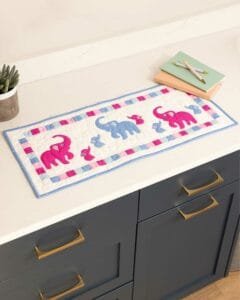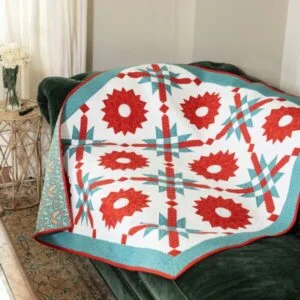The Falling Leaves Quilt Block is a timeless design that adds a touch of seasonal charm to any quilt project. This free pattern is ideal for quilters of all skill levels looking to bring the beauty of autumn into their craft. Whether you’re creating a cozy throw for chilly nights or a vibrant wall hanging, this pattern offers both elegance and simplicity.
In this article, we’ll delve into the details of the Falling Leaves Quilt Block and provide a comprehensive guide on how to make your own using our free pattern. We’ll also explore tips for sewing, fabric choices, and how to customize the block to fit your unique style. Let’s dive into the world of quilting and discover the beauty of this delightful design.
From selecting the right fabric to piecing together the blocks, this guide will walk you through each step of creating a beautiful Falling Leaves Quilt Block. By the end of this article, you’ll have all the information you need to make your own quilt block, plus additional tips to enhance your quilting skills.

1. Understanding the Falling Leaves Quilt Block
The Falling Leaves Quilt Block design is inspired by the beauty of autumn leaves. This block typically features a leaf motif that appears to be drifting down, capturing the essence of the changing seasons. It’s a great pattern for showcasing fabric with vibrant colors and patterns, making it a popular choice among quilters.
The design usually consists of several sections, including a central leaf pattern and background pieces. The blocks can be arranged in various ways to create different visual effects, such as a scattered leaf pattern or a more structured design with alternating colors. The pattern’s versatility makes it suitable for both traditional and contemporary quilt projects.
When using a free pattern for the Falling Leaves Quilt Block, you can expect clear instructions and easy-to-follow steps. These patterns often come with diagrams and cutting guides that simplify the quilting process. Even if you’re a beginner, you’ll find that this design is approachable and rewarding.
To get started, you’ll need to select your fabrics. Opt for fabrics that reflect the seasonal theme, such as rich oranges, deep reds, and golden yellows. These colors will help your quilt block stand out and evoke the feeling of autumn. Don’t forget to gather your quilting supplies, including a rotary cutter, mat, and sewing machine.
2. Materials Needed for the Falling Leaves Quilt Block
Before you start, gather all the necessary materials for your Falling Leaves Quilt Block. Here’s a comprehensive list of what you’ll need:
- Fabric: Choose your fabric according to the pattern’s requirements. For a traditional autumn look, use fabrics in fall colors like reds, oranges, and browns. You might also incorporate fabrics with leaf prints or other seasonal patterns.
- Quilting Tools: Essential tools include a rotary cutter, cutting mat, and quilting ruler. These tools will help you accurately cut your fabric pieces and ensure precise piecing.
- Sewing Machine: A sewing machine with a quarter-inch foot is ideal for piecing quilt blocks. This foot helps maintain consistent seam allowances, which is crucial for achieving a well-constructed block.
- Thread: Use high-quality quilting thread in a color that complements your fabric. The thread should be strong enough to withstand frequent washing and handling.
- Iron: An iron is essential for pressing your seams flat. Proper pressing techniques can greatly impact the overall appearance of your quilt block.
- Pattern: Have your Falling Leaves Quilt Block free pattern handy. This will include the cutting instructions, piecing diagrams, and any special techniques you need to follow.
By ensuring you have all these materials ready, you’ll streamline your quilting process and be prepared to tackle the Falling Leaves Quilt Block with confidence.
3. Step-by-Step Instructions for the Falling Leaves Quilt Block
Creating the Falling Leaves Quilt Block involves several steps, from cutting your fabric to assembling the block. Follow these detailed instructions to ensure a successful outcome:
- Cut Your Fabric: Begin by cutting your fabric pieces according to the dimensions specified in the pattern. Ensure that you measure and cut accurately to avoid issues later on.
- Piece the Leaf Sections: Start by sewing together the pieces of the leaf sections. Follow the pattern’s instructions to piece the leaf components together, paying close attention to seam allowances and matching seams.
- Assemble the Background: Once the leaf sections are complete, piece together the background fabric. This will form the backdrop for your leaf motif, so make sure the background complements the leaf colors.
- Combine the Sections: Sew the leaf sections to the background fabric. Align the pieces carefully and use pins to keep everything in place. Press the seams as you go to ensure a flat and even block.
- Trim and Square Up: After assembling the block, trim any excess fabric and square up the edges. This step is crucial for ensuring that your block is the correct size and shape.
- Finishing Touches: Finally, press the entire block and check for any imperfections. Make any necessary adjustments before moving on to the next block or adding it to your quilt top.
By following these steps, you’ll create a beautifully crafted Falling Leaves Quilt Block that will be a lovely addition to your quilt.
4. Tips for Customizing Your Falling Leaves Quilt Block
Customizing your Falling Leaves Quilt Block can add a personal touch to your project. Here are some tips to help you make the block truly your own:
- Fabric Choices: Experiment with different fabric combinations to create unique looks. Try using fabrics with different textures or prints to add depth and interest to your quilt block.
- Color Variations: While traditional fall colors are popular, don’t be afraid to explore other color palettes. Consider using blues and greens for a different seasonal effect or pastels for a spring-inspired quilt.
- Block Size: Adjust the size of your block to fit your quilt design. You can enlarge or reduce the block size by scaling the pattern appropriately.
- Adding Embellishments: Incorporate embellishments such as appliqué, embroidery, or decorative stitching to enhance your leaf design. These additional details can make your quilt block stand out.
- Mixing Patterns: Combine the Falling Leaves Quilt Block with other quilt blocks to create a varied quilt top. Mixing different patterns can add visual interest and complexity to your quilt.
- Quilt Layout: Plan your quilt layout carefully to highlight the Falling Leaves Quilt Block. Arrange the blocks in a way that showcases their beauty and creates a cohesive design.
By applying these customization tips, you’ll create a quilt that reflects your personal style and stands out with its unique touches.
FAQ
1. What is a Falling Leaves Quilt Block? A Falling Leaves Quilt Block is a quilt design featuring a leaf motif that appears to be falling, often used to represent autumn. It’s popular for its seasonal charm and versatility in quilt projects.
2. Where can I find a free pattern for the Falling Leaves Quilt Block? Free patterns for the Falling Leaves Quilt Block can be found online through quilting websites, blogs, and forums. Many quilting communities and pattern designers offer these patterns for free.
3. What fabrics work best for the Falling Leaves Quilt Block? For a traditional autumn look, use fabrics in fall colors like reds, oranges, and browns. Fabrics with leaf prints or seasonal patterns can also enhance the block’s design.
4. How do I adjust the Falling Leaves Quilt Block size? To adjust the block size, scale the pattern accordingly before cutting your fabric. Make sure to maintain the correct proportions to ensure the block fits well with other blocks in your quilt.
5. Can I use the Falling Leaves Quilt Block in different seasons? Yes, the Falling Leaves Quilt Block can be adapted for various seasons by using different color palettes and fabric prints. For example, you can use pastels for spring or cool colors for winter.
6. What are some common mistakes to avoid when making the Falling Leaves Quilt Block? Common mistakes include inaccurate cutting, inconsistent seam allowances, and improper pressing. To avoid these issues, follow the pattern instructions closely, use accurate measuring tools, and press seams thoroughly.
Join our VIP broadcast list and gain access to exclusive patterns, all for free. As a VIP member, you’ll receive the best patterns daily, delivered directly to your device. ✨📱 It’s a unique opportunity to stay up-to-date with the latest trends and designs, curated just for you. Don’t miss out on enhancing your projects and discovering new inspirations with the best patterns every day! 🎨🔝
Conclusion
In this article, we’ve explored the Falling Leaves Quilt Block and provided a comprehensive guide on how to create this beautiful design using a free pattern. We covered the materials needed, step-by-step instructions, and tips for customizing your quilt block. With this information, you should be well-equipped to start your own Falling Leaves project and add a touch of autumn to your quilting endeavors.
We’d love to hear your thoughts on this guide! Please leave a comment with your feedback or any suggestions for future articles. Your input helps us improve and provide valuable content for quilters like you. Happy quilting!



